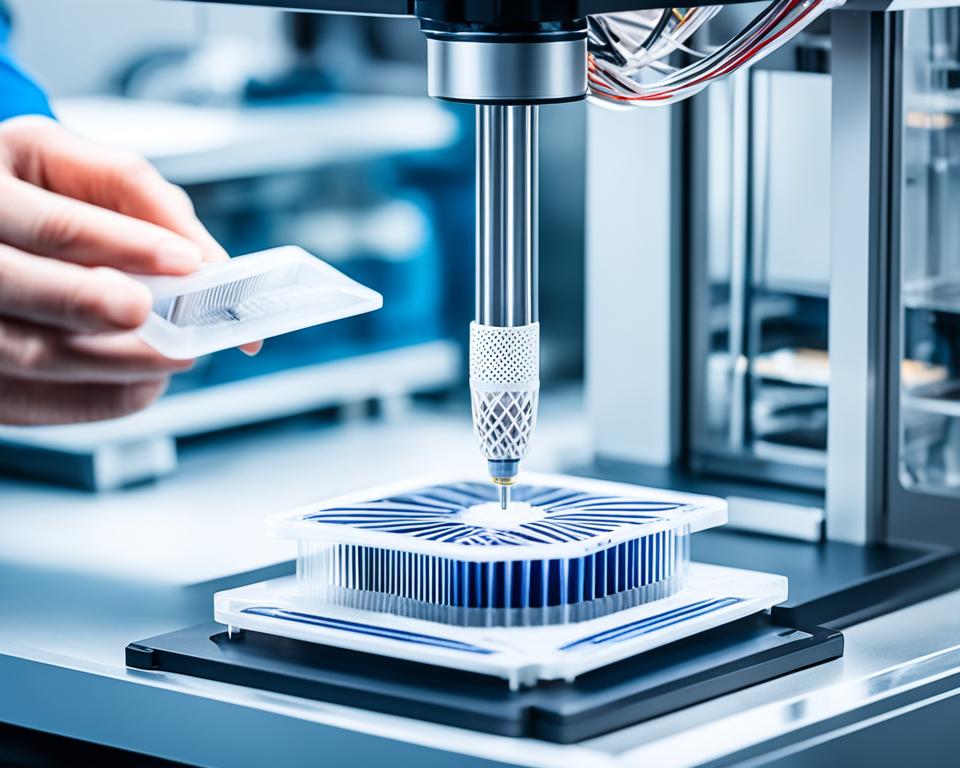3D printing is revolutionizing the field of medicine by offering customized solutions for patients’ unique needs. This technology allows for the creation of personalized medical devices, prosthetics, implants, and even organs. By using 3D printing, healthcare providers can tailor medical solutions to individual patients, improving the effectiveness and outcomes of treatments. The ability to create custom solutions through 3D printing is transforming patient care and paving the way for personalized healthcare.
Key Takeaways:
- 3D printing enables the creation of personalized medical devices, prosthetics, implants, and organs.
- Customized medical solutions improve the effectiveness and outcomes of treatments.
- 3D printing is revolutionizing patient care and opening new possibilities for personalized healthcare.
- The technology offers tailored solutions that are specific to individual patients’ needs.
- By using 3D printing, healthcare providers can improve patient outcomes and enhance quality of life.
Innovations in Medical Technology: Revolutionizing Patient Care with 3D Printing
The advancements in medical technology, particularly in 3D printing, are revolutionizing patient care. Medical professionals now have access to cutting-edge technology that enables them to create customized solutions for patients, improving treatment outcomes and quality of life. The integration of 3D printing in healthcare has opened up a world of possibilities, allowing for the development of personalized healthcare solutions that address each patient’s unique needs.
One of the most significant innovations in this field is the ability to create custom-made medical devices and implants using 3D printing technology. With traditional manufacturing methods, such as milling or casting, producing these devices can be time-consuming and expensive. However, with 3D printing, medical professionals can design and fabricate patient-specific devices quickly and efficiently, reducing the waiting time for patients and increasing overall satisfaction.
3D printing advancements have also played a crucial role in improving surgical planning and patient education. By creating accurate and detailed 3D models of anatomical structures, surgeons can have a better understanding of the patient’s unique anatomy, allowing them to plan and simulate complex procedures before entering the operating room. Moreover, 3D-printed models serve as valuable educational tools, enabling medical students and healthcare professionals to learn and practice surgical techniques in a realistic and interactive manner.
Personalized healthcare solutions are at the forefront of medical technology innovation, and 3D printing is paving the way for advancements in this field. From customized prosthetics and implants to breakthrough medical devices, 3D printing is transforming the way patients receive care and improving their quality of life. As technology continues to evolve, we can expect even more exciting developments in personalized medicine, ultimately leading to better outcomes and enhanced patient experiences.
| Benefits of 3D Printing in Medical Technology Innovations | Examples of 3D Printing Advancements in Patient Care |
|---|---|
|
|
Understanding 3D Printing and Its Impact on Modern Healthcare Technology
As 3D printing technology continues to advance, it is revolutionizing the field of healthcare. With its ability to create customized and precise medical solutions, 3D printing is transforming the way healthcare is delivered. In this section, we will explore the fundamentals of 3D printing in medicine and the process of transforming concepts into reality through medical 3D printing.
The Fundamentals of 3D Printing in Medicine
At its core, 3D printing technology utilizes additive manufacturing techniques to create three-dimensional objects layer by layer. In the context of medicine, it allows for the production of complex medical devices, anatomical models, and even human tissues and organs.
One of the key components of 3D printing in medicine is the selection of appropriate materials. From biocompatible polymers to various metals, the choice of materials plays a crucial role in ensuring the safety and functionality of the printed objects. These materials must meet stringent regulatory requirements to ensure their suitability for medical applications.
Another critical aspect of 3D printing technology in medicine is the ability to design and customize objects according to individual patient needs. By incorporating patient-specific imaging data, medical professionals can create personalized solutions that fit perfectly with the patient’s unique anatomy. This level of customization enhances treatment outcomes and patient satisfaction.
From Concept to Reality: The Process of Medical 3D Printing
The process of transforming a concept into a physical object through medical 3D printing involves several stages and techniques. Let’s explore the typical workflow:
- Data Acquisition: The process begins with the capture of patient-specific data, usually through medical imaging techniques such as CT scans or MRI scans. This data forms the foundation for the subsequent steps.
- Image Processing: The acquired medical images are processed using specialized software to create a three-dimensional model. This model serves as a digital representation of the patient’s anatomy.
- Design and Modeling: Using computer-aided design (CAD) software, healthcare professionals can design and customize medical devices or anatomical models based on the patient’s specific requirements. This stage allows for precise adaptation to individual needs.
- Slicing and Printing: Once the design is finalized, the model is sliced into thin layers, translating the digital representation into printable instructions. These instructions are then sent to the 3D printer, which creates the object layer by layer using the selected materials.
- Post-Processing and Finishing: After printing, the object may undergo post-processing steps such as cleaning, sterilization, and surface finishing to ensure its usability and safety for medical applications.
This process showcases the intricate and powerful nature of medical 3D printing, enabling healthcare professionals to create highly customized solutions that were previously unimaginable.
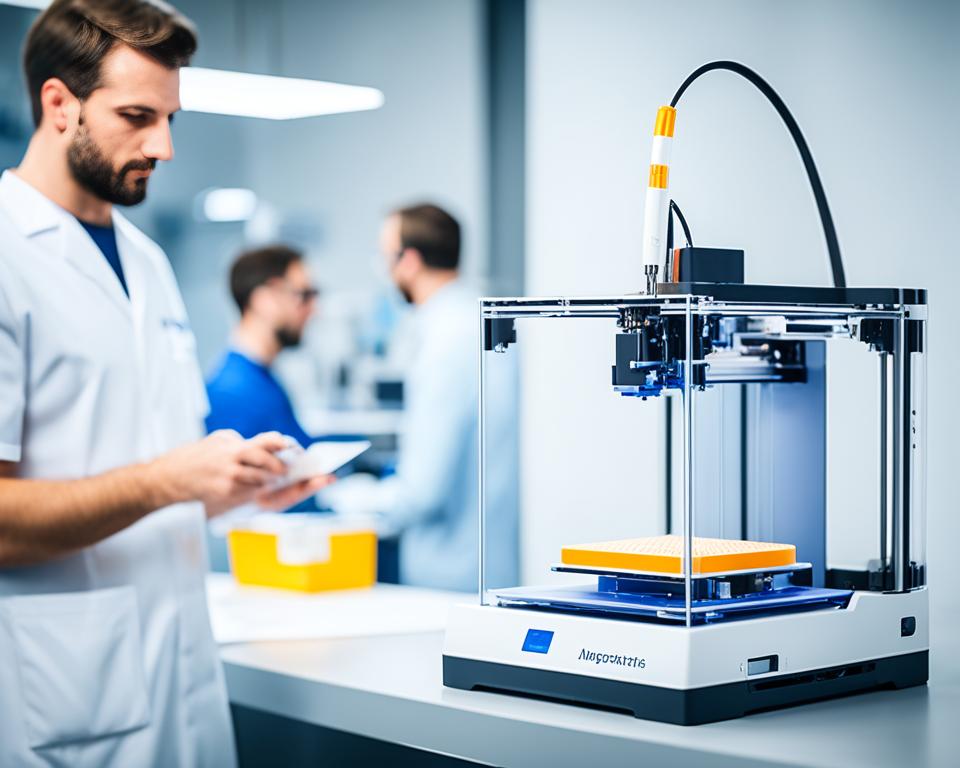
| Benefits of Medical 3D Printing | Challenges of Medical 3D Printing |
|---|---|
|
|
Table: Benefits and Challenges of Medical 3D Printing
Despite the challenges, the rapid advancements in 3D printing technology continue to push the boundaries of what is possible in healthcare. The next section will delve into the exciting world of customized prosthetics and implants made possible through 3D printing.
Customized Prosthetics and Implants: A Leap Forward with 3D Printing
3D printing has revolutionized the field of prosthetics and implants, offering customized solutions for patients. By harnessing the power of this technology, medical professionals can create personalized prosthetics and implants that perfectly fit the unique needs and anatomies of individuals. This section will explore the incredible advancements made in using 3D printing to produce customized prosthetics and implants, revolutionizing the healthcare landscape.
One of the most significant advantages of 3D-printed prosthetics and implants is their ability to be tailored to individual patients. Using detailed scans and digital design software, healthcare providers can precisely map the contours and dimensions of a patient’s body. This level of customization ensures a comfortable fit, enhancing patient comfort and overall satisfaction.
Moreover, 3D-printed prosthetics and implants offer improved functionality. These personalized healthcare solutions can be engineered to mimic the functionality of natural body parts, allowing for increased mobility and performance. Whether it’s a prosthetic limb or a dental implant, the customization provided by 3D printing ensures optimal functionality and seamless integration with the patient’s existing anatomy.
Cost-effectiveness is another advantage of 3D-printed prosthetics and implants. Compared to traditional manufacturing methods, 3D printing allows for the production of complex and intricate designs with fewer resources, reducing costs and making personalized healthcare solutions more accessible to a wider population. This breakthrough technology has the potential to make life-changing medical devices more affordable and inclusive.
Furthermore, 3D-printed prosthetics and implants enable healthcare providers to address specific medical requirements and unique patient scenarios. From creating adjustable prosthetics for growing children to fabricating implants that are a perfect match for an individual’s bone structure, the possibilities are endless. This level of personalization leads to better patient outcomes, improved quality of life, and enhanced long-term success rates.
In conclusion, 3D printing has transformed the field of prosthetics and implants, allowing for customized solutions that revolutionize personalized healthcare. The advancements in 3D printing technology have paved the way for improved comfort, functionality, and cost-effectiveness. As this technology continues to evolve, the potential for customized prosthetics and implants to enhance patient care and quality of life grows exponentially.
Breakthrough Medical Devices: Pioneering Custom Solutions through 3D Technology
This section highlights the groundbreaking medical devices that have been developed using 3D printing technology. These innovations are revolutionizing healthcare by offering custom solutions for patients. By leveraging the power of 3D printing, medical professionals can create devices that are tailored to individual needs, resulting in improved treatment outcomes and patient satisfaction.
One of the key advantages of 3D-printed medical devices is their ability to address specific patient requirements. Case studies of innovative applications of 3D printing in the creation of medical devices, such as surgical instruments, assistive devices, and patient-specific implants, are a testament to the transformative potential of this technology.
Regulatory challenges and compliance considerations are crucial aspects of manufacturing 3D-printed medical devices. Stringent regulations ensure that these devices meet the highest standards of safety and efficacy. By navigating these challenges, manufacturers can bring innovative healthcare technology to market, benefiting patients and healthcare providers alike.
Case Studies: Innovative Applications of 3D Printing in Medical Devices
3D printing has revolutionized the creation of medical devices across various specialties. Take, for example, the field of orthopedics, where 3D-printed implants have transformed the treatment of complex fractures. By using patient-specific data to design and manufacture implants, orthopedic surgeons can achieve superior fit, functionality, and patient outcomes.
Another area where 3D printing has made significant strides is in the creation of surgical instruments. By 3D-printing instruments with complex geometries, medical professionals can enhance precision, reduce surgical times, and improve patient safety.
Additionally, 3D printing technology is unlocking new possibilities in the realm of assistive devices. Customized prosthetics, braces, and mobility aids can be designed and manufactured with greater speed, accuracy, and comfort, improving the quality of life for individuals with disabilities.
Regulatory Challenges and Compliance in 3D Device Manufacturing
The manufacturing of 3D-printed medical devices involves rigorous compliance with regulatory standards to ensure patient safety and efficacy. Regulatory bodies, such as the Food and Drug Administration (FDA), have established guidelines for the design, testing, and manufacturing of these devices.
Key considerations include material biocompatibility, sterilization methods, and clinical validation. Manufacturers must demonstrate that their 3D-printed devices meet the same rigorous standards as traditionally manufactured medical devices. This involves extensive testing, documentation, and quality control processes.
With the evolution of healthcare technology, regulatory frameworks continue to evolve to keep pace with the advancements in 3D printing. It is essential for manufacturers to stay informed about regulatory updates and collaborate with regulatory authorities to ensure compliance throughout the manufacturing process.
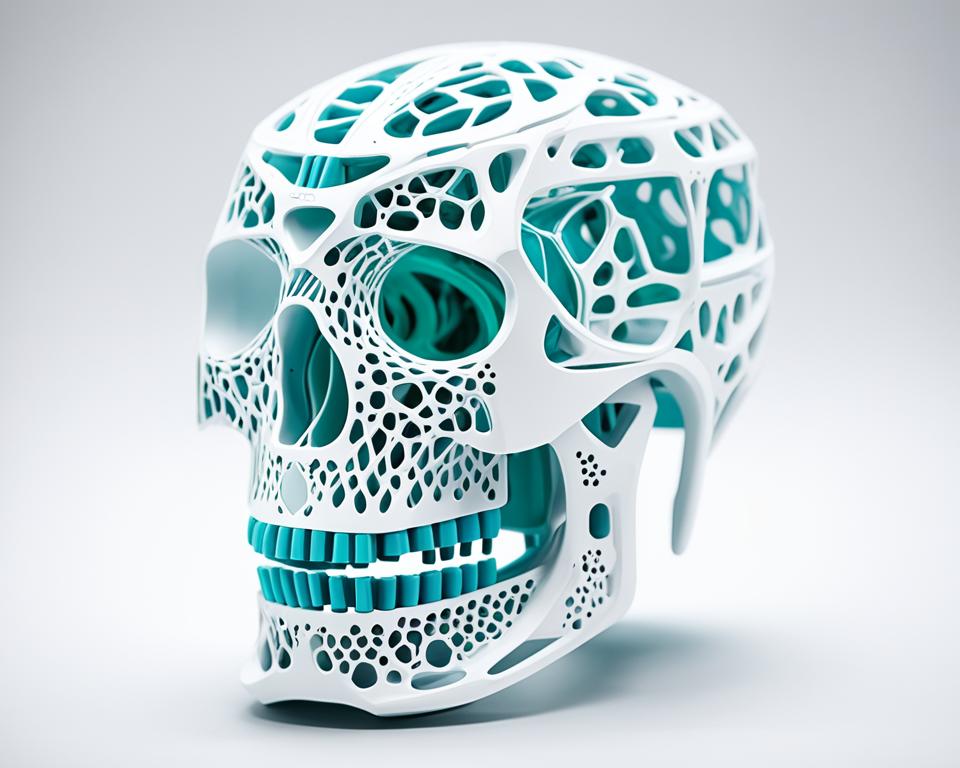
Bioprinting: The Future of Organ Transplants and Tissue Engineering
Bioprinting, a promising field within 3D printing, holds immense potential in revolutionizing organ transplants and tissue engineering. By combining the principles of 3D printing with regenerative medicine, bioprinting aims to create functional human tissues and organs that can be used for transplantation, research, and drug testing.
Advancements in bioprinting technology have paved the way for the development of complex, three-dimensional structures that closely mimic the architecture and functionality of natural tissues. By precisely depositing bioink composed of living cells, biomaterials, and growth factors, bioprinting enables the creation of intricate tissue constructs with vascular networks and cellular organization.
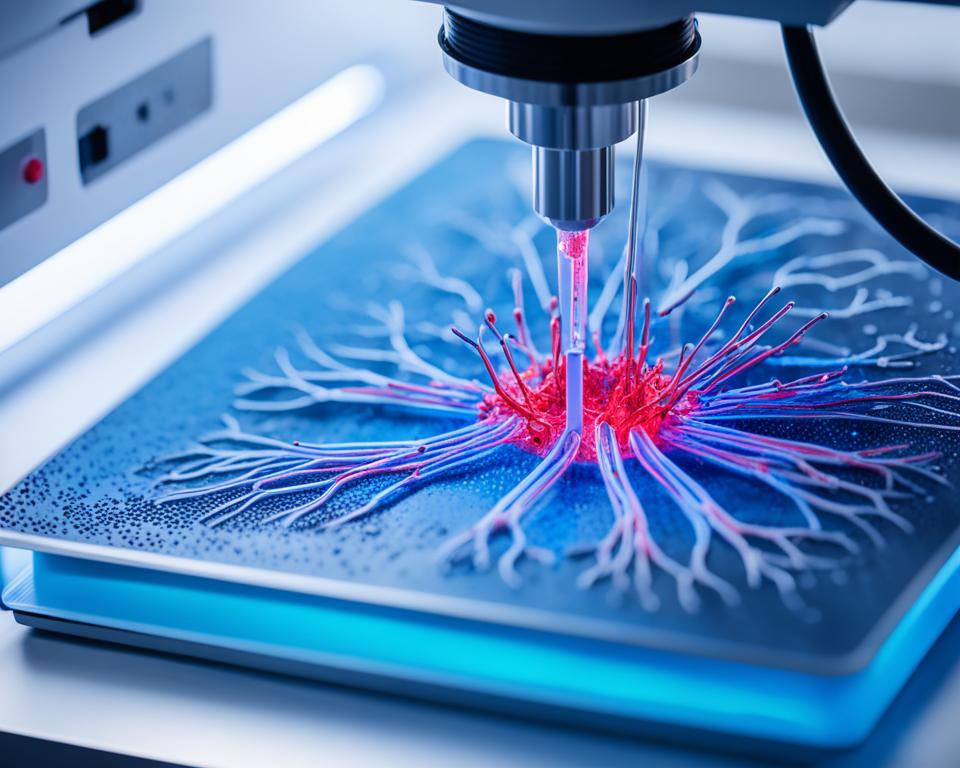
The potential impact of bioprinting on organ transplants is monumental. Currently, there is a substantial shortage of organs available for transplantation, leading to long waiting times and high mortality rates. Bioprinting offers the possibility of creating patient-specific organs, reducing the risk of rejection and eliminating the need for immunosuppressive drugs.
Tissue engineering is another area that stands to benefit from bioprinting. By fabricating functional tissues in the laboratory, researchers can study disease mechanisms, test new therapies, and develop personalized treatment approaches. Bioprinted tissues also hold promise in regenerative medicine, where they can be used to repair damaged tissues and promote the body’s natural healing processes.
Despite the promising advancements, there are still challenges to overcome in the field of bioprinting. Ensuring the viability and functionality of bioprinted tissues, achieving vascularization, and scaling up production are areas that require further research and development. Additionally, ethical considerations, such as the source of cells and the potential for misuse, must be addressed.
Overall, the potential of bioprinting in transforming organ transplants and tissue engineering is immense. As technology continues to advance, bioprinting holds the key to personalized healthcare solutions, improving patient outcomes, and revolutionizing the field of regenerative medicine.
Personalizing Patient Care: The Advantages of 3D Printed Medical Models
Utilizing 3D printed medical models in healthcare has revolutionized personalized patient care. These models offer numerous advantages, ranging from pre-surgical planning to patient education, ultimately improving surgical outcomes and enhancing the overall healthcare experience.
Pre-Surgical Planning and Patient Education using 3D Models
One of the key advantages provided by 3D printed medical models is their integration into pre-surgical planning. Surgeons can now utilize these models to visualize intricate anatomical structures and practice complex procedures before undertaking the actual surgery. This allows surgeons to develop a comprehensive understanding of the patient’s unique anatomy, leading to more precise surgical intervention and improved patient outcomes.
Furthermore, 3D models serve as exceptional educational tools for patients. These models enable healthcare professionals to effectively communicate complex medical information in an easily understandable visual format. By using these models, patients can have a clear understanding of their condition, the proposed treatment plan, and the expected outcomes. This promotes active patient engagement, leading to better patient satisfaction and compliance with treatment protocols.
Improving Surgical Outcomes with Tailored 3D Anatomical Replicas
Another significant advantage of 3D printed medical models is the ability to create tailored anatomical replicas that accurately represent a patient’s unique physiology. These replicas can be customized according to an individual’s specific needs, allowing surgeons to develop patient-specific strategies for surgical interventions.
By employing 3D anatomical replicas, surgeons have access to invaluable information about the patient’s anatomical variations, enabling them to anticipate potential challenges and tailor surgical approaches accordingly. This personalized approach translates into increased surgical precision, reduced operating time, and minimized risks, ultimately leading to improved surgical outcomes and enhanced patient safety.
In conclusion, the utilization of 3D printed medical models has transformed patient care by facilitating pre-surgical planning, enhancing patient education, and improving surgical outcomes. The ability to visualize and practice complex procedures using these models allows surgeons to optimize their approach, leading to more successful surgeries. Additionally, the educational benefit for patients fosters informed decision-making and active participation throughout the treatment process. With the continued advancements in 3D printing technology, the potential for personalized patient care will only continue to expand, revolutionizing the healthcare landscape.
Emerging Trends in Medical Technology: The Growing Role of 3D Printing
In recent years, medical technology has witnessed a remarkable transformation with the advent of 3D printing. This innovative technology is rapidly gaining momentum and driving several emerging trends in the healthcare industry. As 3D printing advancements continue to push boundaries, personalized medicine, telemedicine, wearable devices, and other cutting-edge healthcare solutions are becoming increasingly accessible.
One of the most significant emerging trends in medical technology is the rise of personalized medicine. The ability to create customized medical solutions using 3D printing allows healthcare providers to tailor treatments to the specific needs of individual patients. This individualized approach improves treatment outcomes, enhances patient comfort, and ultimately leads to better overall healthcare delivery.
Telemedicine is another rapidly growing trend in the healthcare industry, and 3D printing is playing a crucial role in its expansion. Through the use of 3D-printed models, healthcare professionals can virtually guide and educate patients, even from remote locations. This technology facilitates accurate diagnosis, treatment planning, and patient education, revolutionizing the way healthcare is delivered.
Wearable devices have also seen significant advancements due to 3D printing. With the ability to create personalized and customized wearables, such as prosthetic limbs or orthodontic aligners, 3D printing has revolutionized the comfort and functionality of these devices. Patients can now benefit from a more tailored and efficient healthcare experience.
As these emerging trends take center stage, the role of 3D printing in medical technology is set to expand further. The possibilities offered by this technology are seemingly limitless, and its potential impact on healthcare delivery is immense. From personalized medicine to enhanced telemedicine, 3D printing continues to push boundaries and shape the future of medical technology.
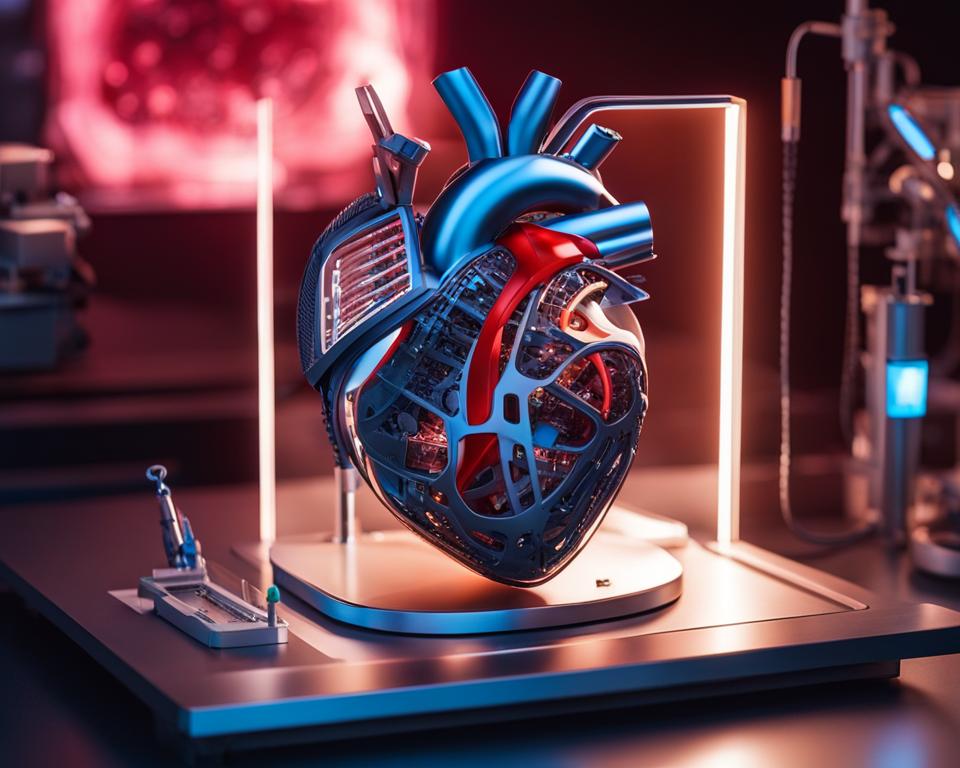
Disruptive Healthcare Solutions: 3D Printing’s Role in Fighting Diseases
With its remarkable capabilities, 3D printing technology is revolutionizing the healthcare industry, offering disruptive solutions in the treatment of various diseases. This section highlights the transformative role of 3D printing in healthcare, focusing on its application in cancer treatment support and the advancements in creating 3D-printed pharmaceuticals.
3D Printed Solutions for Cancer Treatment Support
Cancer treatment often requires personalized approaches to achieve optimal outcomes. 3D printing has emerged as a powerful tool in the development of tailored solutions for cancer patients. By utilizing this technology, healthcare professionals can create personalized medication delivery systems that precisely target cancer cells while minimizing side effects. These 3D-printed systems enable the controlled release of medication, enhancing treatment efficacy and patient comfort.
Furthermore, 3D printing facilitates tissue engineering in cancer research, enabling the creation of custom-made models that mimic the characteristics of tumors. These models allow scientists to study the behavior of cancer cells, test potential therapies, and develop personalized treatment plans. The ability to 3D print patient-specific tissue constructs has the potential to accelerate advancements in precision medicine and revolutionize cancer treatment.
Advancements in Creating 3D Printed Pharmaceuticals
Traditional pharmaceutical manufacturing processes often result in standardized medications that may not fully address the unique needs of individual patients. 3D printing technology offers a promising solution by enabling the creation of patient-specific pharmaceuticals.
Researchers and pharmaceutical companies are leveraging 3D printing to produce customized medications with tailored dosage forms, release profiles, and combinations of active ingredients. This advancement allows for precise drug delivery, increasing therapeutic effectiveness and reducing adverse effects. Additionally, 3D-printed pharmaceuticals have the potential to streamline the production of clinical trial samples, expediting drug development and enhancing patient-specific treatments.
| Advantages of 3D Printed Pharmaceuticals | Benefits to Disease Treatment |
|---|---|
| Personalized dosing | Optimized treatment outcomes |
| Complex drug release profiles | Improved therapeutic efficacy |
| Combination therapies in single formulations | Enhanced treatment convenience |
| Precise drug localization | Reduced side effects |
These advancements in creating 3D-printed pharmaceuticals hold great promise for personalized medicine, enabling healthcare providers to tailor treatments according to each patient’s unique requirements.
Advancing Medical Education: 3D Printed Models as Teaching Tools
3D printing technology is revolutionizing medical education by providing realistic and customizable models for teaching purposes. This innovative approach has transformed the way anatomy education, surgical training, and clinical simulations are conducted.
One of the main advantages of using 3D printed models in medical education is the improved visualization they offer. These models provide a three-dimensional representation of anatomical structures, allowing students and healthcare professionals to observe and study complex systems from different angles. This enhanced visualization greatly enhances their understanding and retention of anatomical knowledge.
Another significant benefit of 3D printed models is the opportunity for hands-on learning. By physically interacting with these models, students can better comprehend the spatial relationships between different anatomical structures. They can manipulate and dissect the models, simulating real-life scenarios and gaining invaluable practical experience.
Additionally, 3D printed models are invaluable tools for enhancing the understanding of complex anatomical structures. Traditional teaching methods often rely on textbooks, illustrations, and two-dimensional images, which do not provide a comprehensive understanding of the intricacies of the human body. With 3D printed models, students can explore the details of organs, bones, muscles, and other structures, gaining a deeper understanding of their interconnections and functions.
| Advantages | Description |
|---|---|
| Improved Visualization | 3D models provide a realistic and detailed view of anatomical structures, enhancing understanding and retention. |
| Hands-on Learning | Students can physically interact with the models, gaining practical experience and improving spatial comprehension. |
| Enhanced Understanding | 3D printed models allow for the exploration of complex anatomical structures, promoting a deeper understanding of their functions and interconnections. |
Overall, 3D printed models are valuable teaching tools in medical education, enabling students and healthcare professionals to acquire a comprehensive understanding of anatomy and surgical procedures. As this technology continues to advance, it holds tremendous potential for transforming medical education and ultimately improving patient care.
Future of Medical Technology: Potential and Limitations of 3D Printing
As the field of medical technology continues to advance, 3D printing stands at the forefront of innovation. With its ability to create customized, patient-specific solutions, 3D printing has the potential to revolutionize the future of healthcare. However, it’s important to acknowledge the limitations that currently exist in this rapidly evolving technology.
Exploring the Uncharted Territory: Next-Generation 3D Printing Innovations
Looking ahead, the future of medical technology holds exciting possibilities for 3D printing. Researchers and scientists are actively exploring next-generation 3D printing innovations, such as the development of functional organs and the field of biofabrication. These advancements have the potential to reshape the landscape of healthcare by enabling the production of fully functional, transplantable organs, ultimately addressing the organ shortage crisis and saving countless lives.
In addition to organ printing, advancements in bioprinting are opening new doors for tissue engineering and regenerative medicine. By harnessing the power of bioprinting, researchers are working towards creating complex tissues and structures that mimic the human body. From skin grafts to bone implants, these innovations have profound implications for personalized medicine and patient care.
Assessing the Financial and Ethical Considerations of Advanced 3D Printing
While the future of medical technology and 3D printing is promising, it’s crucial to consider the financial and ethical considerations associated with advanced printing techniques. The cost-effectiveness and accessibility of advanced 3D printing technologies are important factors that need to be addressed for widespread adoption in healthcare settings. As research and development continue, it will be essential to find ways to make these technologies more affordable and accessible to patients and healthcare providers.
Furthermore, ethical considerations surrounding 3D printing in healthcare must be carefully evaluated. Questions regarding patient safety, regulatory compliance, and the ethical implications of creating functional organs and tissues through 3D printing need to be thoroughly examined. This will ensure that the benefits of advanced 3D printing technologies are maximized while safeguarding the well-being of patients and ensuring responsible use.
In conclusion, the future of medical technology holds tremendous potential for 3D printing. Next-generation innovations and advancements in bioprinting offer new possibilities for personalized healthcare solutions, with the hope of revolutionizing patient care and improving outcomes. However, as with any rapidly evolving technology, it is essential to address the financial, ethical, and regulatory considerations associated with advanced 3D printing. By doing so, we can harness the full potential of this technology and usher in a new era of healthcare.
Conclusion
In conclusion, 3D printing has had a significant impact on customized medical solutions, revolutionizing the field of healthcare. This technology has allowed for the creation of personalized medical devices, prosthetics, implants, and even organs, tailored to the unique needs of individual patients. The key advancements in 3D printing have improved treatment outcomes, patient comfort, and overall quality of life.
The benefits of using 3D printing technology in healthcare are numerous. Customized prosthetics and implants provide patients with better fit, functionality, and cost-effectiveness. Breakthrough medical devices, such as surgical instruments and patient-specific implants, are pushing the boundaries of personalized healthcare. Additionally, the use of 3D printed medical models in pre-surgical planning and patient education has improved surgical outcomes and provided a better understanding of complex anatomical structures.
Looking ahead, the expanding horizons of 3D printing in healthcare hold immense potential. Bioprinting, in particular, offers promising advancements in organ transplants and tissue engineering, paving the way for regenerative medicine. Furthermore, emerging trends such as personalized medicine and wearable devices demonstrate the growing role that 3D printing will play in the future of medical technology.
In conclusion, 3D printing has transformed the field of healthcare by providing customized medical solutions. As this technology continues to evolve, we can expect even more groundbreaking advancements that will shape the future of personalized healthcare.
FAQ
How is 3D printing revolutionizing patient care?
3D printing technology offers customized solutions for patients, allowing for personalized medical devices, prosthetics, implants, and even organs. This tailored approach improves treatment outcomes and quality of life.
What are some significant innovations in medical technology using 3D printing?
Innovations in 3D printing technology include personalized prosthetics, patient-specific implants, surgical instruments, and assistive devices. Bioprinting is also a promising field for creating functional human tissues and organs.
How does 3D printing impact modern healthcare?
3D printing in medicine uses materials and a printing process to transform concepts into physical objects. It enables personalized healthcare, improved visualization for surgical planning, and enhanced anatomical understanding.
How does 3D printing benefit prosthetics and implants?
3D printing allows for the creation of customized prosthetics and implants that fit patients’ unique needs and anatomies. These solutions offer improved comfort, functionality, and cost-effectiveness.
What are some breakthrough medical devices created using 3D printing?
Medical devices such as surgical instruments, assistive devices, and patient-specific implants have been developed using 3D printing technology. These innovations facilitate personalized healthcare solutions.
What is the potential of bioprinting in revolutionizing organ transplants and tissue engineering?
Bioprinting holds promise in creating functional human tissues and organs for organ transplants and tissue engineering. While advancements have been made, there are still challenges to overcome in this field.
How do 3D printed medical models personalize patient care?
3D models are used for pre-surgical planning and patient education, allowing surgeons to visualize and practice complex procedures. These models enhance surgical outcomes by providing customized tools and patient-specific information.
What are the emerging trends in medical technology driven by 3D printing?
3D printing is playing an increasing role in personalized medicine, telemedicine, wearable devices, and other innovative healthcare solutions. These trends shape the future of medical technology.
How is 3D printing used in developing disruptive healthcare solutions?
3D printing is used in cancer treatment support through personalized medication delivery systems and tissue engineering for cancer research. It also advances the creation of 3D-printed pharmaceuticals for drug development and patient-specific treatments.
How does 3D printing technology enhance medical education?
3D printed models are used as teaching tools in anatomy education, surgical training, and clinical simulations. They improve visualization, offer hands-on learning, and enhance understanding of complex anatomical structures.
What is the future potential and limitations of 3D printing in medical technology?
3D printing has the potential to develop functional organs and advance biofabrication. However, considerations such as cost-effectiveness, accessibility, and patient safety must be taken into account.
What is the impact of 3D printing on customized medical solutions?
3D printing technology has revolutionized healthcare by offering customized solutions for patients, improving treatment outcomes and advancing personalized medicine. Its expanding horizons have the potential for even further applications in the future.
Source Links
- https://www.amnhealthcare.com/blog/physician/perm/8-medical-innovations-in-2023/
- https://www.proclinical.com/blogs/2022-4/top-10-new-medical-technologies-2022
- https://newsroom.clevelandclinic.org/2022/02/16/cleveland-clinic-unveils-top-10-medical-innovations-for-2022/

